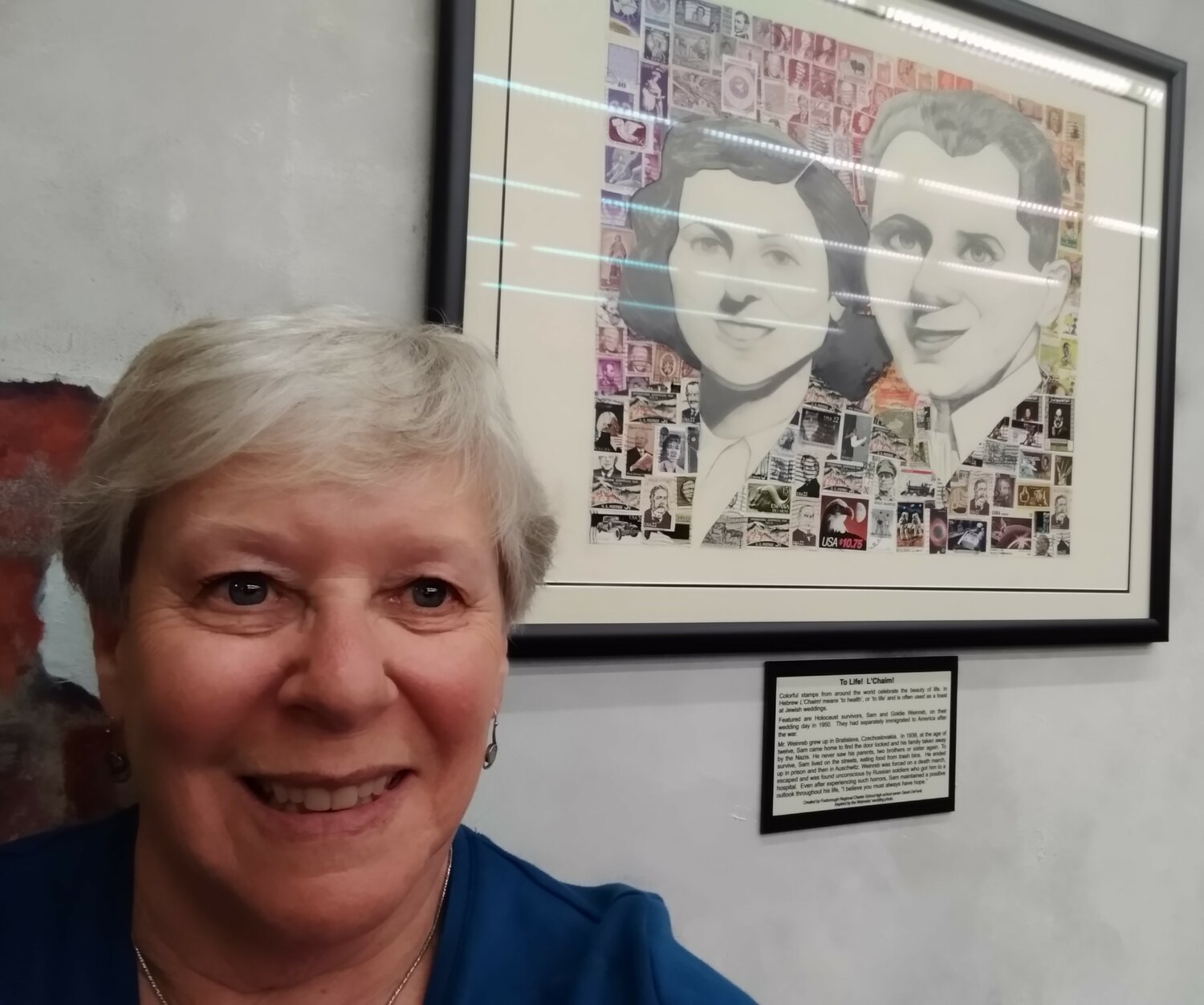An exhibit every American should see
The June opening of “A Philatelic Memorial of the Holocaust” at the American Philatelic Center, featuring the Holocaust Stamps Project’s 11 million stamps and 18 collages made from some of the stamps, is significant in many ways.
Above all, the permanent exhibition at the museum in Bellefonte, Pennsylvania, run by the American Philatelic Society, preserves the hard work of the students and staff at the Foxboro Regional Charter School, in Foxboro, Massachusetts, where the stamps were collected from 2009 to 2017.
I’ve written extensively about the project, and that’s given me time to reflect on its importance in an era when antisemitism has been sharply increasing.
Here are my top five reasons why the exhibit should be viewed by people of all backgrounds to enhance their knowledge of the Holocaust, so it never happens again.
1. An alarming rise in hate
The ease and speed at which antisemitism is growing is alarming. The Anti-Defamation League’s April report showed a 41% rise in antisemitic incidents in Massachusetts from 2021 to 2022, and a more than 35% spike nationwide over that same period.
That hate has continued in 2023. For example, a swastika and hate-filled words directed at the LGBTQ+ community were recently found spray-painted on the 110-year-old Congregation Agudath Achim, in Taunton, Massachusetts. That vandalism particularly saddened me, because it’s where my wife, Lynne, and I were married almost 35 years ago.
2. Teachers can make a difference
Charlotte Sheer, now retired, showed what could be done to get an elementary-school class to talk about something as ghastly as the Holocaust without frightening the children. The stamps project was an offshoot of a discussion in her fifth-grade class in 2009 about a children’s book on the Holocaust, “Number the Stars,” by Lois Lowry. The book tells the story of a Danish girl who helps smuggle Jewish families out of German-occupied Denmark during World War II.
But how did that discussion lead to the K-12 school collecting 11 million stamps? Sheer, in an interview with Josh Moyer of the Centre Daily Times, in Pennsylvania, recalled the project’s genesis: “We came around to the fact that once you use it [a stamp] once, it’s thrown away as having no value – which is exactly what Hitler was doing with human beings, throwing them away as having no value,” Sheer said.
“So, then I took it a step further and I took out a whole bunch of postage stamps for them to look at, and I said, ‘What do you notice about them?’ They said they’re all different. They had different places, different people and different values, even. They represented the diversity of the world, which Hitler was trying to eliminate. So, we had a lot of symbolism attached to the stamps.”
3. A lesson children can grasp
During the exhibition’s dedication, Boaz Dvir, the director of the Holocaust, Genocide and Human Rights Education Initiative at Penn State, spoke about the hands-on benefits of the Holocaust Stamps Project. Dvir told Moyer that this was the type of learning “that can alter the perception of a child and provide that child with something they can carry on beyond just regurgitating knowledge on a test.”
Sheer agreed.
“What we’ve done means other kids are going to learn from it and, hopefully, adults too,” she said. “And in this age of rising antisemitism, it couldn’t happen at a more important time.”
4. The significance of the 11 million
At a time when far too many people seem emboldened by political rhetoric to promote hate against not only American Jews, but other minorities, especially Blacks and members of the LGBTQ+ community, it’s important to stress why 11 million stamps were collected. That figure was chosen to represent both the 6 million Jews slaughtered by the Nazis and the 5 million people of other faiths and backgrounds who were killed.
In addition, with Holocaust survivors dwindling to a precious few, it’s vital to recall that the Holocaust began with hate speech and by dehumanizing Jews, members of the LGBTQ+ community and others who weren’t part of the Aryan majority in Germany. This is why laws passed in some states that aim to take away the rights of minorities are not only morally wrong, but also dangerous: they promote the first steps toward normalizing hate that could – God forbid – lead to a new Holocaust.
5. Lessons beyond the classroom
Here are two examples of how Holocaust education can connect with people of all ages:
Stamps were donated from 48 states, the District of Columbia and 29 countries, including from a woman in Vermont who called me in 2015, while I was working at The Sun Chronicle, in Attleboro. Alice Dulude said her husband, Bill, a stamp collector, had bought a box of stamps at a show and wanted to donate it. Their son, Bill Dulude Jr., dropped off the box of 60,000 stamps to me, and I turned it over to Sheer.
There’s a neat story behind the selfie of Sheer that accompanies this column. It was taken in front of the last collage made by students. Titled “L’Chaim – To Life!,” it celebrates Holocaust survivors Sam and Goldie Weinreb, who immigrated to Pittsburgh before moving to the Boston area. It was created by Sarah Defanti, who was in the Foxboro school’s Class of 2018, Sheer said, and noted that Defanti didn’t stop there. Sheer said that after learning that “his arrest by the Nazis had halted Weinreb’s education, she [Defanti] convinced the school administration to issue him an honorary diploma as a member of her own graduating class. The special bond that grew between them lasted right up until Weinreb’s passing in 2021.”
That’s the perfect example of a student learning an enduring lesson.
LARRY KESSLER (larrythek65@gmail.com) is a freelance writer based in North Attleboro. He blogs at larrytheklineup.blogspot.com.









